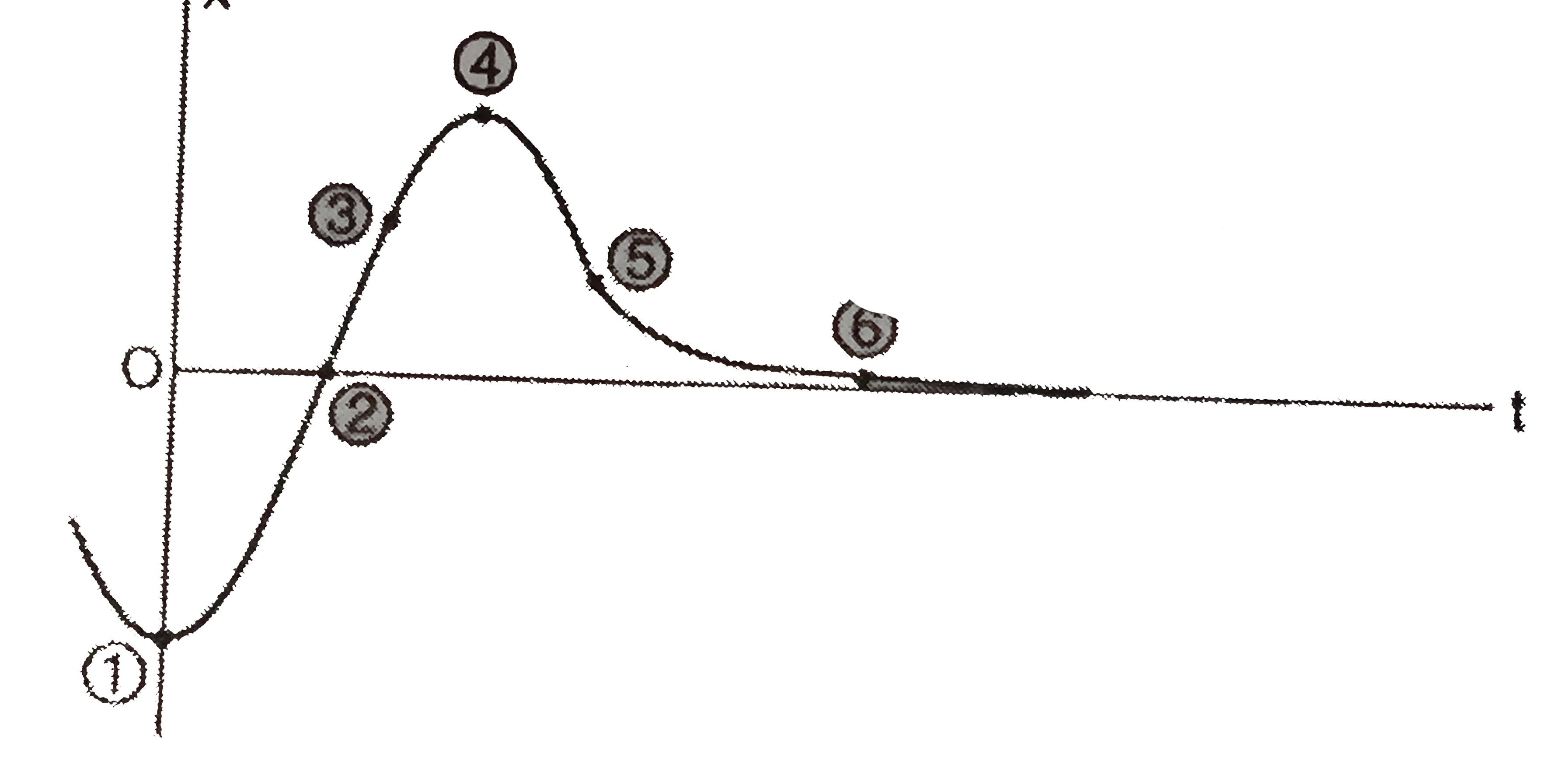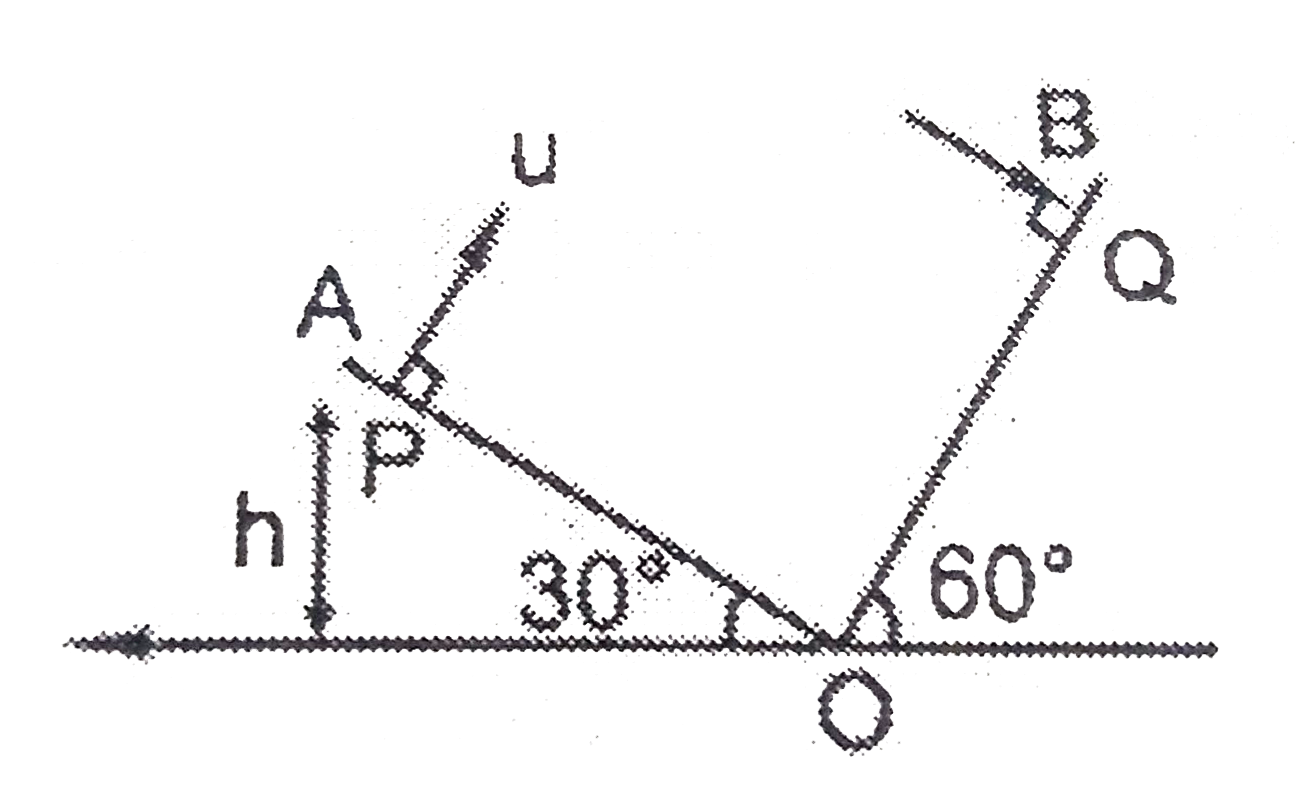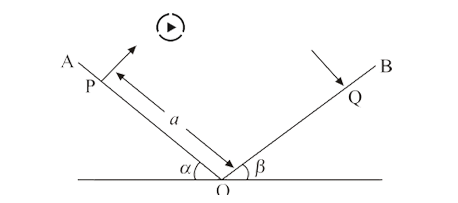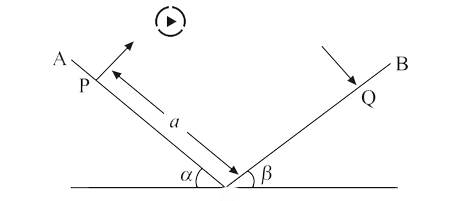Two inclined planes OA and OB having inclinations 30∘ and 60∘ with the horizontal respectively intersect each other at O, as shown in figure. A particle is projected from point P with velocity u=10√3m/s along a direction perpendicular to plane OA. If the particle strikes plane OB perpendicular at Q. Calculate.

(a) time of flight,
(b) velocity with which the particle strikes the plane OB,
(c) height h of point P from point O,
(d) distance PQ. (Take g=10m/s2)
We have taken x and y directions along OB and OA respectively. Then
ux=u=10√3m/s,uy=0
ax=−gsin60∘=−5√3m/s2
and ay=−gcos60∘=−5m/s2
(a) At point Q, x-component of velocity is zero. Hence substituing in
vx=ux+axt
0=10√3−5√3t
or t=10√35√3=2s
(b) At point Q.
v=vy=uy+ayt
∴v=0−(5)×(2)=−10m/s
Here negative sign impu lies that velocity of particle at Q is along negative y-direction.
(c) Distance
PO= |displacement of particle along y-direction|
Here, PO=∣∣∣uyt+12ayt2∣∣∣=∣∣∣0−12×5×(2)2∣∣∣
−|−10m|=10m
Therefore, h=POsin30∘=10×12=5m
(d) Distance OQ=displacement of particle along x-direction
or OQ=10√3m
∴PQ=√(PO)2+(OQ)2
=√(10)2+(10√3)2=20m
Topper's Solved these Questions
Similar Questions
A particle is moving along X-axis under a force such that its position -time graph is as shown in figure.

As the particle passes position (1):
View SolutionIf force, mass and time are taken to be base physical quantities with dimensional formula [F], [M] and [T], then :
Dimensional formula for energy is :
View SolutionTwo inclined planes OA and OB having inclination (with horizontal) 30∘ and 60∘ respectively , intersect each other at O. A particle is projected from point 'P' with velocity u=10√3 m/s along a direction perpendicu lar to plane OA. If the particle strikes plane OB perpendicu lar at Q. Calcu late:

Time of flight of the particle:
View SolutionTwo inclined planes OA and OB intersect in a horizontal plane having their inclinations αandβ with the horizontal as shown in figure. A particle is projected from P with velocity u along a direction perpendicular to plane OA. The particle strikes plane OB perpendicularly at Q.

The path of the particle from P to Q is
View SolutionTwo inclined planes OA and OB intersect in a horizontal plane having their inclinations alpha and beta with the horizontal as shown in figure. A particle is projected from P with velocity u along a direction perpendicular to plane OA. The particle strikes plane OB perpendicularly at Q. If alpha = 30^@ , beta = 30^@ the time of flight from P to Q is
View SolutionTwo inclined planes OA and OB intersect in a horizontal plane having their inclinations αandβ with the horizontal as shown in figure. A particle is projected from P with velocity u along a direction perpendicular to plane OA. The particle strikes plane OB perpendicularly at Q.

If α=30∘,β=30∘ and a = 4.9 m, the initial velocity of projection is
View SolutionTwo inclined planes OA and OB having inclinations 30^@ and 60^@ with the horizontal respectively intersect each other at O, as shown in figure. A particle is projected from point P with velocity u=10 sqrt(3) m//s along a direction perpendicular to plane OA. If the particle strikes plane OB perpendicular at Q. Calculate. (a) time of flight, (b) velocity with which the particle strikes the plane OB, (c) height h of point P from point O, (d) distance PQ. (Take g=10m//s^(2) )
View SolutionTwo inclined planes OA and OB intersect in a horizontal plane having their inclinations alpha and beta with the horizontal as shown in figure. A particle is projected from P with velocity u along a direction perpendicular to plane OA. The particle strikes plane OB perpendicularly at Q. If alpha = 30^@ , beta = 30^@ the time of flight from P to Q is
View Solution
